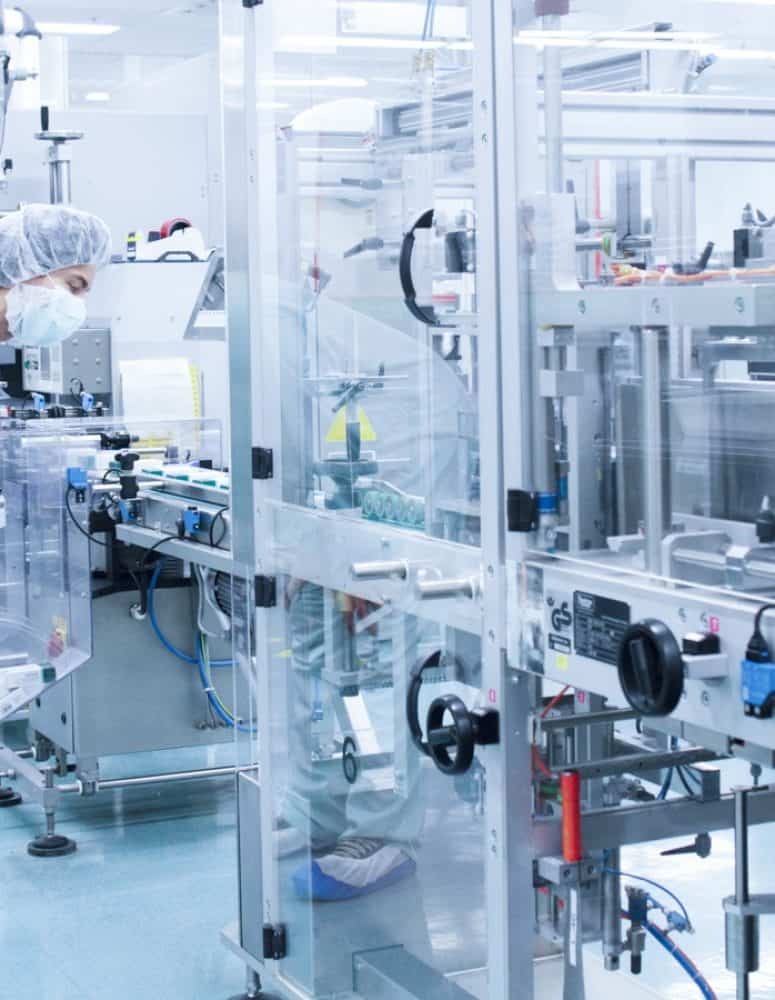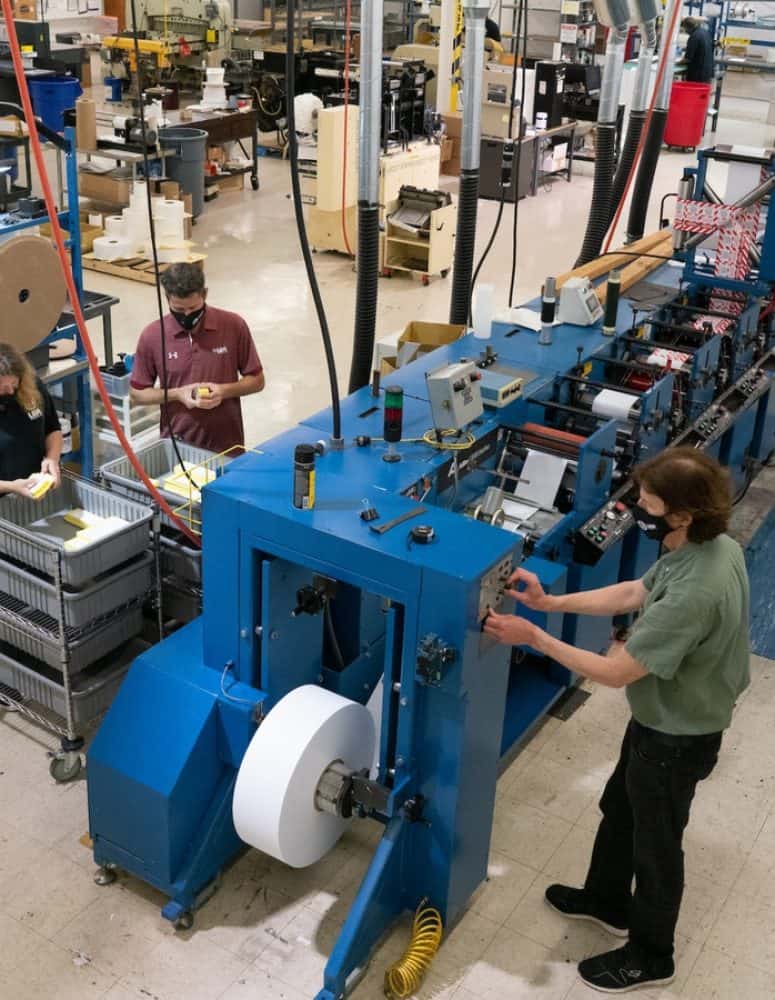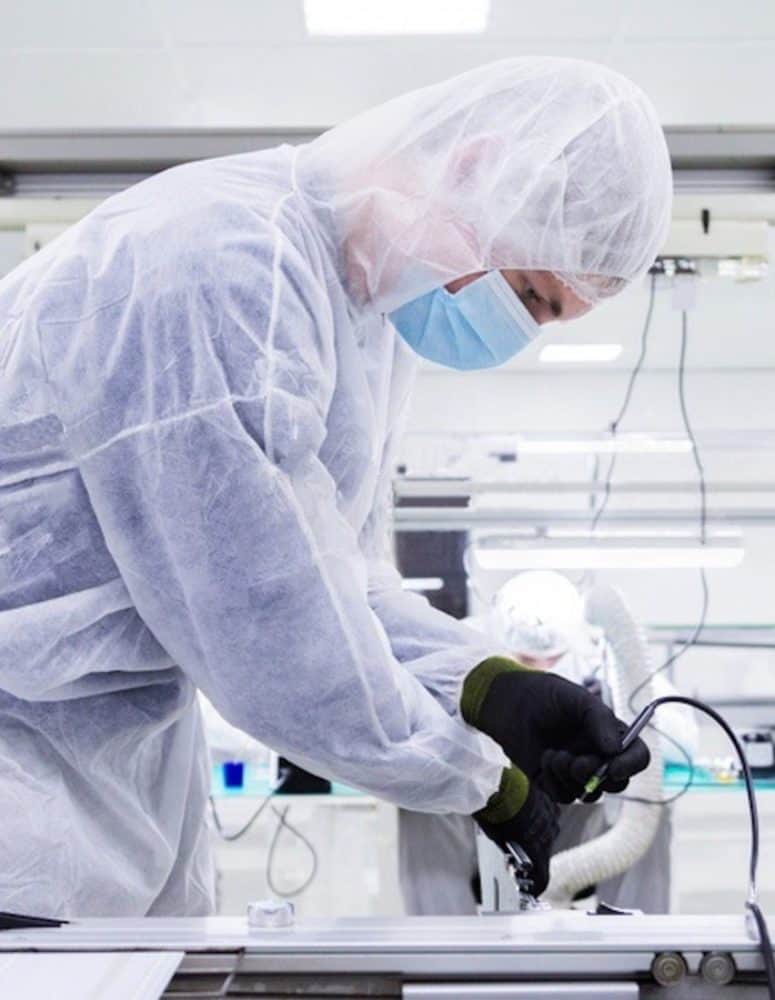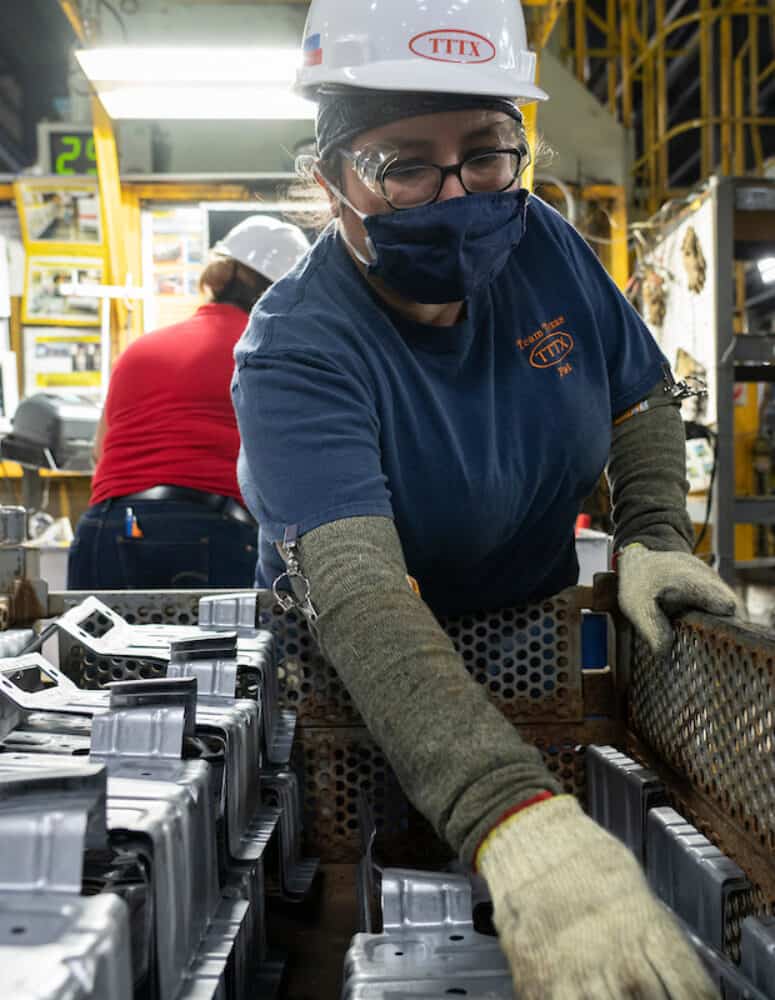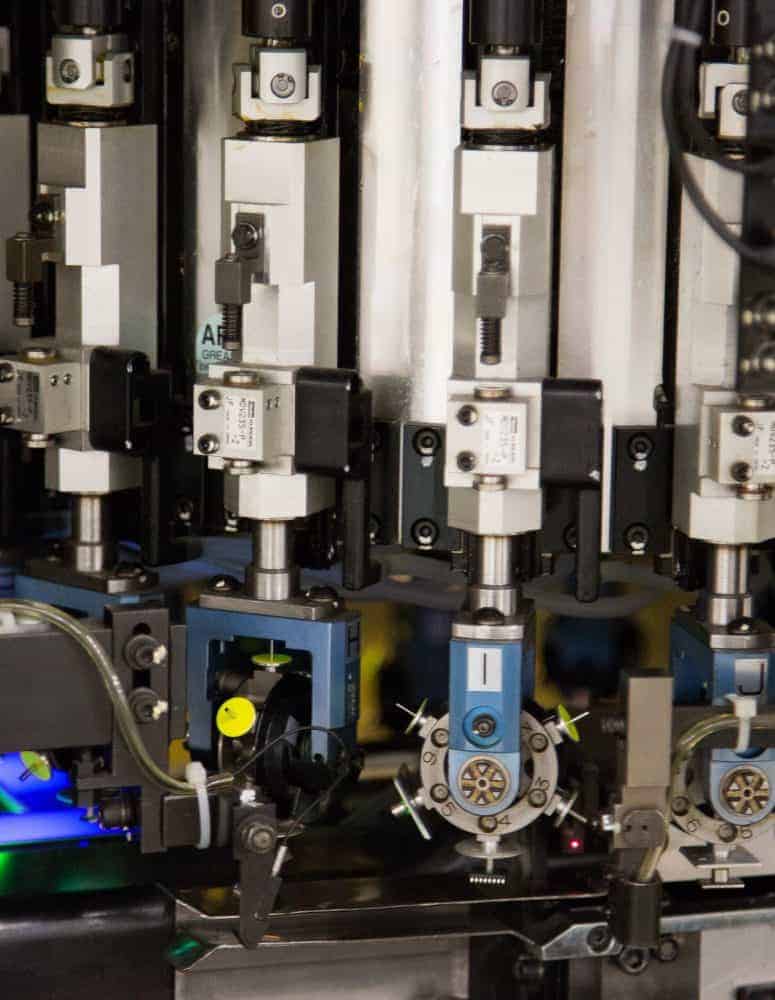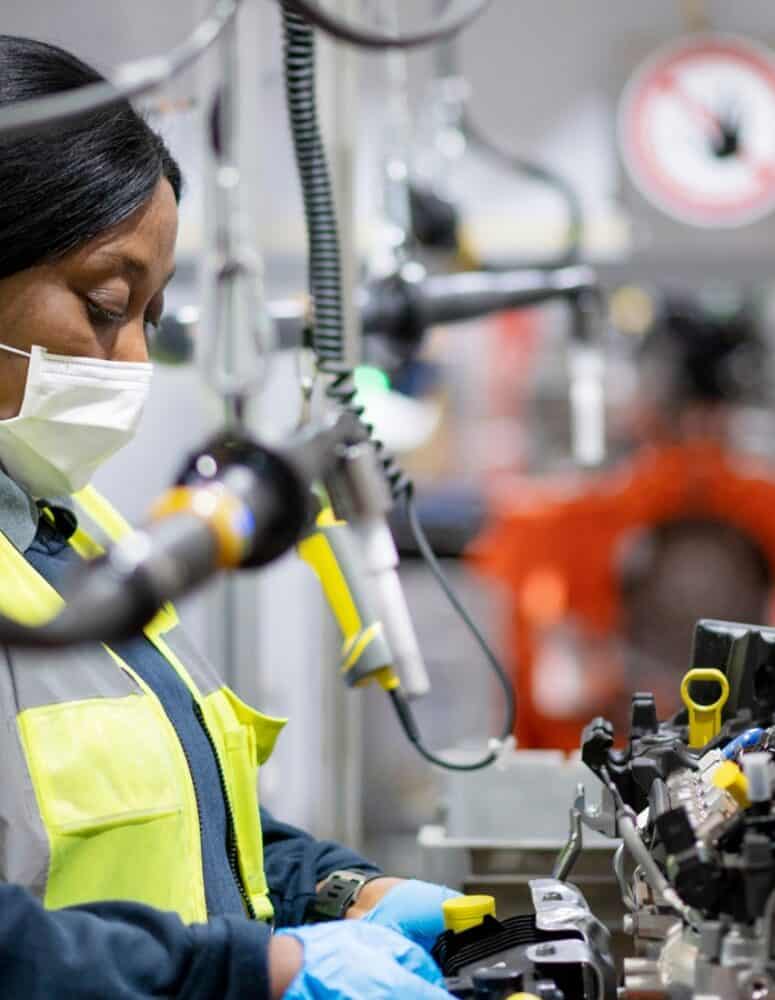Engage Your Partners in a Digital Supply Chain
How manufacturers can help smaller supply chain partners embrace the changes needed for a successful digital supply chain.
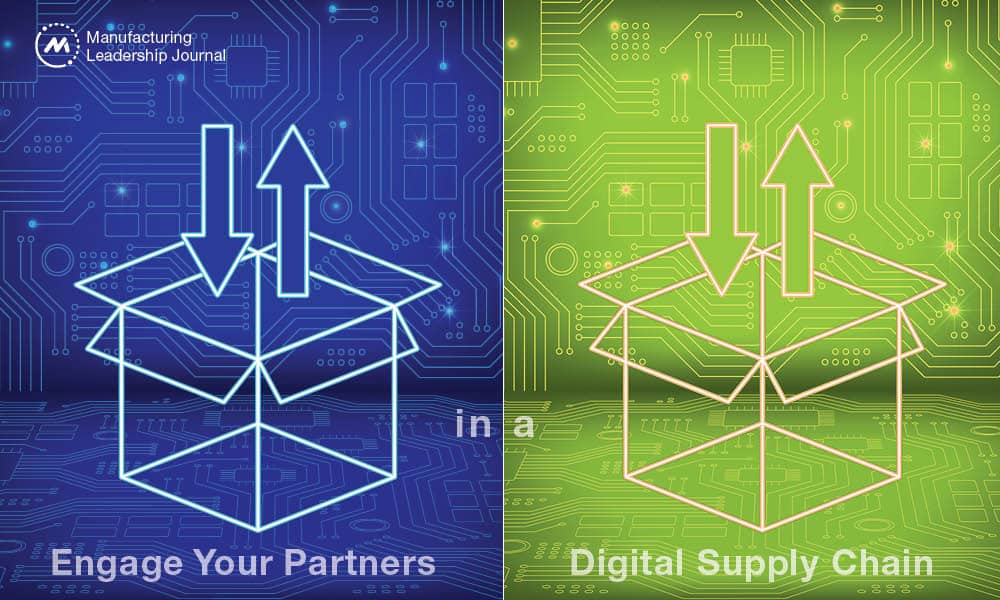
How manufacturers can help smaller supply chain partners embrace the changes needed for a successful digital supply chain.

On a recent Manufacturing Leadership Council (MLC) call, member participants discussed their most pressing issues and priorities for supply networks in 2022. Strategies for helping smaller supply chain partners to embrace digitization wasn’t one of the top five topics ranked (it was slotted eighth), but it consumed a good part of the discussion. This wasn’t a surprise. It’s consistent with what we’re hearing from many of our manufacturing clients: Lack of digitization in the supply chain is hampering visibility and agility.
Increasing visibility into the supply chain was already a priority for manufacturers of all sizes before the pandemic, but it’s now become critical given the levels of volatility, instability, and unpredictability. In a Gartner study, 80% of respondents said they have insufficient supply chain visibility.
Pandemic May End, Instability Will Remain
We believe the supply chain issues brought on by the pandemic and recent geopolitical events will persist for some time. Companies that were in a steady state a year ago are seeing new challenges emerge.
Consider the example of a contract manufacturer that produces and packages beverages. The company’s customer buys packaging materials, orchestrates the logistics, and sends the materials. The company suddenly found it was having issues getting raw materials for cans on time. The materials were coming from a new supplier. While the raw material was in spec when the manufacturer put the material through its process, it found cans were tipping over due to small variances for which their machines were not optimized. This caused significant downtime. If the manufacturer had better visibility into its supply chain, it could plan better for the changes by qualifying the new cans and optimizing machine settings ahead of planned production runs. But because of the nature of the relationship, the contract manufacturer was in the dark. Many other manufacturers have similar stories.
Even when things do stabilize, there will continue to be new and unexpected challenges. Agility and resiliency will be key to reacting quickly: rerouting orders, developing distribution center bypass programs with high-volume customers, or switching plants or lines within the four walls of an existing plant, for instance. Consumer and industrial brand owners and their suppliers and other supply chain partners will need to advance digital capabilities to increase visibility and, thus, agility.
Brand Owners Must Take the Initiative
Many larger manufacturers are already on the journey toward developing a digital supply chain, but their Tier 1, 2, and 3 suppliers are medium-sized to smaller companies that may be in the early stages of embracing smart, digital technology — or have not even begun. When smaller suppliers do not have the technical footprint to manage data or enable the necessary interfaces — for example, APIs between ERPs or EDI between logistics partners, customers, and manufacturers — the relationship must rely on spreadsheets and manual processes, such as on-the-water reports. Manual processes are not just slower, but also prone to errors. In a survey conducted by Supply Chain Dive and West Monroe, nearly 75% of manufacturing and distribution executives said they are primarily using Microsoft Excel in their S&OP processes.

“The more mature trading partner needs to set the example and take the reins.”
Manufacturers whose efforts to increase supply chain visibility are limited by suppliers’ lack of digitization need to be proactive in guiding their suppliers — particularly smaller ones — toward M4.0 and digital transformation. In other words, the more mature trading partner needs to set the example and take the reins. If you are in this situation, what should you be thinking about? And what steps should you take?
What Good Supply Chain Visibility Looks Like
Ideally, a brand owner should have insight into key supply elements up and down the supply chain, including product development through sourcing, assembly, distribution, and logistics to the point of consumption. The seed of visibility starts with validated and released technical specifications for raw materials or subassembly components. Once validated and released, these should accompany the product through the supply chain because these technical specs are needed by multiple stakeholders: manufacturing, purchasing, warehousing, logistics, customers, regulators, and others.
Having common data enables an OEM and Tier 1 (and lower) suppliers to get ahead of potential specification or supply disruptions. For example, if a component will run out of supply in four weeks, the OEM can work with the supplier to find an appropriate substitute. Automotive manufacturing has had full supply chain visibility for several decades. Complete traceability back to the IGES file on the CAD tube allows OEMs to make last-minute engineering changes to prevent line stoppages — coordinating among purchasing, supplier, and logistics providers to time the change so it cuts into the manufacturing line on a specific date and shift.
Typically, the key to this level of visibility is extending the OEM’s ERP to the supply base and logistics partners through an Esker or Infor Nexus or similar P2P tool. The relatively simple act of presenting purchase orders for acceptance and editing through a browser can go a long way toward improving inbound visibility to raw materials or finished goods.
Understandably, the operating model will influence visibility and data needs. Some models present more risk of flying blind. For example, if a Tier 1 supplier manages other tiers below it, then there may not be visibility into or control of those tiers. If an OEM uses a nominated supplier list only, then there may not be adequate visibility into prices paid or rebate arrangements between suppliers. In such cases, emerging technology such as blockchain may allow the OEM to monitor such transactions. Another common practice is an invoice audit system to confirm process paid and rebates taken — assuming suppliers are willing to provide this level of transparency.
Why Aren’t Companies Farther Along?
The concept of a digital supply chain is still nebulous and means different things to different people. As a result, many manufacturers may not have a clear vision. When there isn’t a clear target, it’s easier to defer action.
Securing resources is a challenge — especially now. Developing better visibility across the supply chain requires investment in people, dollars, and time. But many organizations are still buried in the rubble of issues brought on by the pandemic. Some have taken action in fits and starts, but the volatility of the past two years has prevented sustained progress. Others have had to defer investments altogether due to the uncertainty of the market.

“If the goal is to become digital, you need to solve analog problems with a digital mindset.”
There is also the issue of trust. Partners must have confidence in each other’s security capabilities and a willingness to connect systems in a world where cybersecurity risks are growing at an exponential rate. Ransomware incidents are proliferating, particularly in manufacturing. In West Monroe’s third-quarter 2021 executive poll, cyberattacks represented the second-largest threat to conducting business, behind only hiring and retention of workforce.
Guiding Suppliers Toward a Digital Supply Chain
Although your approach will depend on your specific operating model and business needs, we believe there are some common denominators that apply in most situations. Some of these are low-cost or no-cost initiatives that can help you build traction, which can be especially valuable given the challenges involved with securing new technology investments.
Start with what you can control. If your backyard isn’t in order, then why reach over into the neighbor’s yard? Assess your supply chain processes to understand where you can drive improvement. An assessment should look for gaps in technology, processes, and people, and also measure the maturity of key capabilities that you need to be able to use data from your supply chain to make decisions. This should provide clarity around the most critical next steps and highlight the particular areas of the supply chain — and particular suppliers — where you should focus to increase collaboration, automation, and visibility.
Make this a multidisciplinary initiative. Increasing supply chain visibility is a complex effort that impacts and/or requires the participation of multiple functions, including procurement, finance, inventory management, distribution, production, sales, marketing, information technology, and more. A multidisciplinary team with representation from key functions and a clear mandate will make greater progress than an individual function trying to tackle this on its own.
Like any digital initiative, this will require skills in supply chain management, operations, inventory optimization, organizational resilience, data analytics, software development, and risk management. As you ramp up, focus on filling any key skill gaps necessary to establish an effective program for working with smaller suppliers to increase visibility.
Clarify what good visibility means for your organization. Analyze critical scenarios and determine the data required, as well as who needs it, and when. To participate in a digital supply chain, it is important to understand what data needs to be shared with customers and vendors and what data, in return, you need access to. For example, receiving up-to-date lead times on a specific part can be ingested into a production scheduling system to make necessary updates to the schedule which could trigger communication to the customer with updated delivery dates. Another example is receiving accurate inbound logistics estimated arrival (at port) times via EDI connections to vessel operators or freight forwarders.
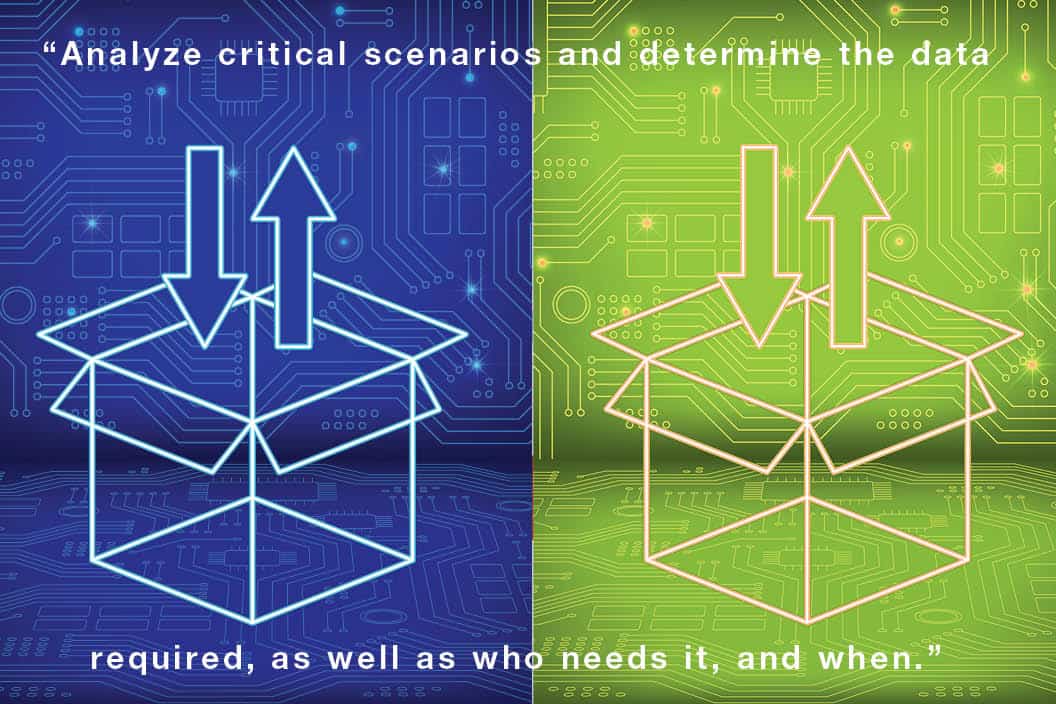
Develop baseline metrics such as critical component lead times, days of supply, or quality conformance to inform stakeholders, enable goal setting and agile decision-making. Where possible, try to measure supply chain processes as a whole with suppliers and customers and not just as an individual company or buyer. This, of course, assumes some level of interconnectivity across the entire supply chain.
Engage your supply partners. If the goal is to become digital, you need to solve analog problems with a digital mindset. That starts with focusing on the end user, business stakeholders, and supply partners, and working to solve the problem from their perspectives.
Dialogue is key to increasing supply chain visibility, and the good news is that doesn’t require (much) investment. Establish monthly meetings with a clear agenda around goals and setting the strategy for sharing data. Start by understanding what is important to each party and plans for focus over the coming year. This discussion should work toward establishing data standards and governance — including the types of data that will and will not be shared and how that will happen.
Once a good dialogue has been established, this can proceed to an assessment of what is required to achieve the desired level of integration. A simple SWOT analysis may suffice, or in more complex relationships, it may be necessary to dedicate resources to dig into the issues and opportunities. This will involve detailed discussion around master data, APIs, EDI, integrations across multiple applications, and middleware layers and how exceptions are managed. These are essential points to making supply chain visibility happen.

“There is no going back to normal. There is only now, and managing in the now requires agility.”
Digital leaders also move fast — they fail fast, learn, adapt, and iterate. This is an area where it can be very helpful to start with a pilot program that allows you to test approaches, assess the results, see what works, and then expand effective practices.
Once the program is moving on multiple dimensions, it may be helpful to have a program management office that can manage the process of building integration capabilities relevant to various supply partners. As you implement changes, measure the ongoing output and use that insight to make additional improvements.
Determine the right supporting technology. Automation will be key to increasing supply chain visibility — and this will require investment. The good news is that today’s companies have access to increasingly effective technologies, and broader choices. Step one in this process is to understand those capabilities and how leading organizations are using them to increase visibility into their supply network.
Be prepared to facilitate the discussion around evaluating and selecting the right tools and applications to enable integration, particularly when working with smaller and less technology-enabled supply chain partners. Surviving the next significant supply chain disruption will require a level of flexibility that organizations cannot achieve with complex spreadsheet formulas. So, consider where you can use automation to share the necessary data and remove reliance on spreadsheets, particularly upstream where master data and feeder data originate. One common solution is to extend ERP access to partners so they can fill in data. Robotic process automation can also serve as a stop-gap measure or enhancement to existing manual processes for updating milestones.

“This is a journey, and the sooner you start, the sooner you will see results.”
Additionally, consider whether or how cost-sharing may be possible. For example, can one business provide market insight for all parties involved? This can help address some of the financial constraints of smaller suppliers.
Integrated operations management (IOM). It is important to look at how information flows within and between companies. The right people need to have the right information and conversations at the right time to effectively manage the business. Look at this holistically to ensure comprehensive long-, medium-, and short-range planning occurs. Ensure controls are in place to monitor the execution of processes and catch small problems before they grow. Most importantly, ensure data is integrated and behaviors are developed to review performance, action variance, and drive continuous improvement. Taking this action across supply chain participants extends transparency in the direction of the customer with better, faster updates related to completion dates and estimated deliver schedules to enhance service.
If you are a supply partner, what can you do? Foremost, be open to dialog with your OEM customer(s) and collaborate, collaborate, collaborate! But you don’t need to wait for a larger customer’s project to get going. Start with your own processes and suppliers first, and then think about managing upwards.
Manage for Now
As far as the pandemic and geopolitics are concerned, we are not out of the woods yet. Also, it is likely the structural changes brought on by the pandemic and other disruptive events over the past few years will be here to stay. There is no going back to normal. There is only now, and managing in the now requires agility. In our view, supply chains cannot be agile without being digital. Manufacturers need to stop deferring the need to be digital. Starting to tackle the transparency issue will drive tangible progress. There are steps you can take now — described above — but, you will eventually need to make some necessary investments to develop the level of visibility and transparency that creates an agile, resilient supply chain. This is a journey, and the sooner you start, the sooner you will see results. M
About the authors:

David McGraw is Senior Manager, Consumer & Industrial Products.

Kris Slozak is Senior Principal, Consumer & Industrial Products

Tim Vadney is Director, Operations Excellence, with West Monroe
Manufacturers Gain a Competitive Edge with the NAM’s MLC
Get the Latest News
Get involved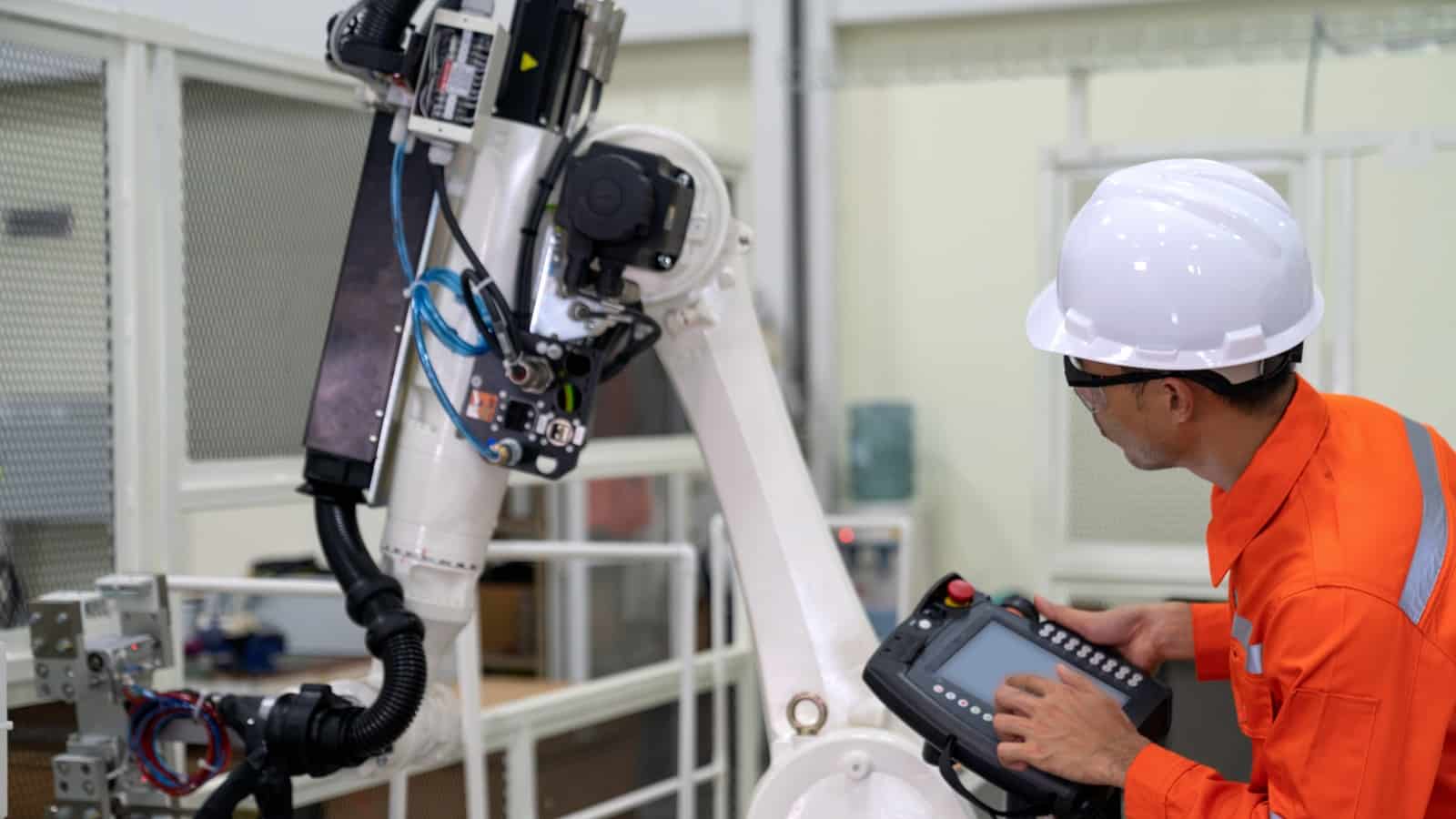
If you’re interested in Manufacturing 4.0, you should know about the Manufacturing Leadership Council. The MLC, the division of the NAM dedicated to digital transformation in manufacturing operation, aims to help manufacturing leaders understand the digital future and the technology, leadership and organizational structures necessary to improve competitiveness and operational excellence.
Critical issues focus: Every year, the MLC creates a Critical Issues agenda around topics determined by its membership of more than 2,600 industry leaders. These include transformative technologies, cybersecurity, sustainability, next-generation leadership and more. The MLC offers focused resources to help manufacturers assess the opportunities and challenges ahead.
Why it matters: Given the industry’s rapid pace of change, manufacturers need to innovate to stay competitive. The MLC helps manufacturers identify new technologies and discover best practices so they can keep up in the digital era.
Key resources: There are many ways manufacturers can tap into the MLC:
- The Manufacturing in 2030 Project: This year-long initiative looks into the future of manufacturing and examines megatrends that will shape the world by 2030. The project helps manufacturers prepare for what lies ahead two, five and 10 years from now.
- Manufacturing Leadership Journal: This web-based publication offers the latest industry news, case studies and best practices from manufacturers working on the front lines. Each bimonthly issue focuses on a theme, such as M4.0 cultures, sustainability or factories of the future.
- Master Class Series: These virtual events explore new technologies, address manufacturer pain points and help those in the industry leverage opportunities by connecting with forward-thinking technology experts. Sessions in the series include interactive webinars, deep dives and tech talks.
- Plant tours: In-person and virtual plant tours provide the opportunity to see advanced manufacturing technologies in action at some of the best-known companies in the industry. Tours offer an up-close look at technologies and processes, plus Q&As with the experts.
- Rethink: The Manufacturing Leadership Council Summit: The MLC’s premier event for manufacturing leaders offers a unique blend of high-level content, interactive discussions and networking with industry peers. This year’s event takes place June 27–29 in Marco Island, Florida.
- Manufacturing Leadership Awards: Each year, these prestigious industry awards recognize operational and leadership excellence from world-class manufacturing organizations and individual leaders.
Get involved: Visit www.manufacturingleadershipcouncil.com to learn more or contact [email protected] to start the discussion on whether the MLC is right for you.
“A Driver Rather Than a ‘Retirer’ of Employment”: Technology Supports Workers
Get the Latest News
Get involved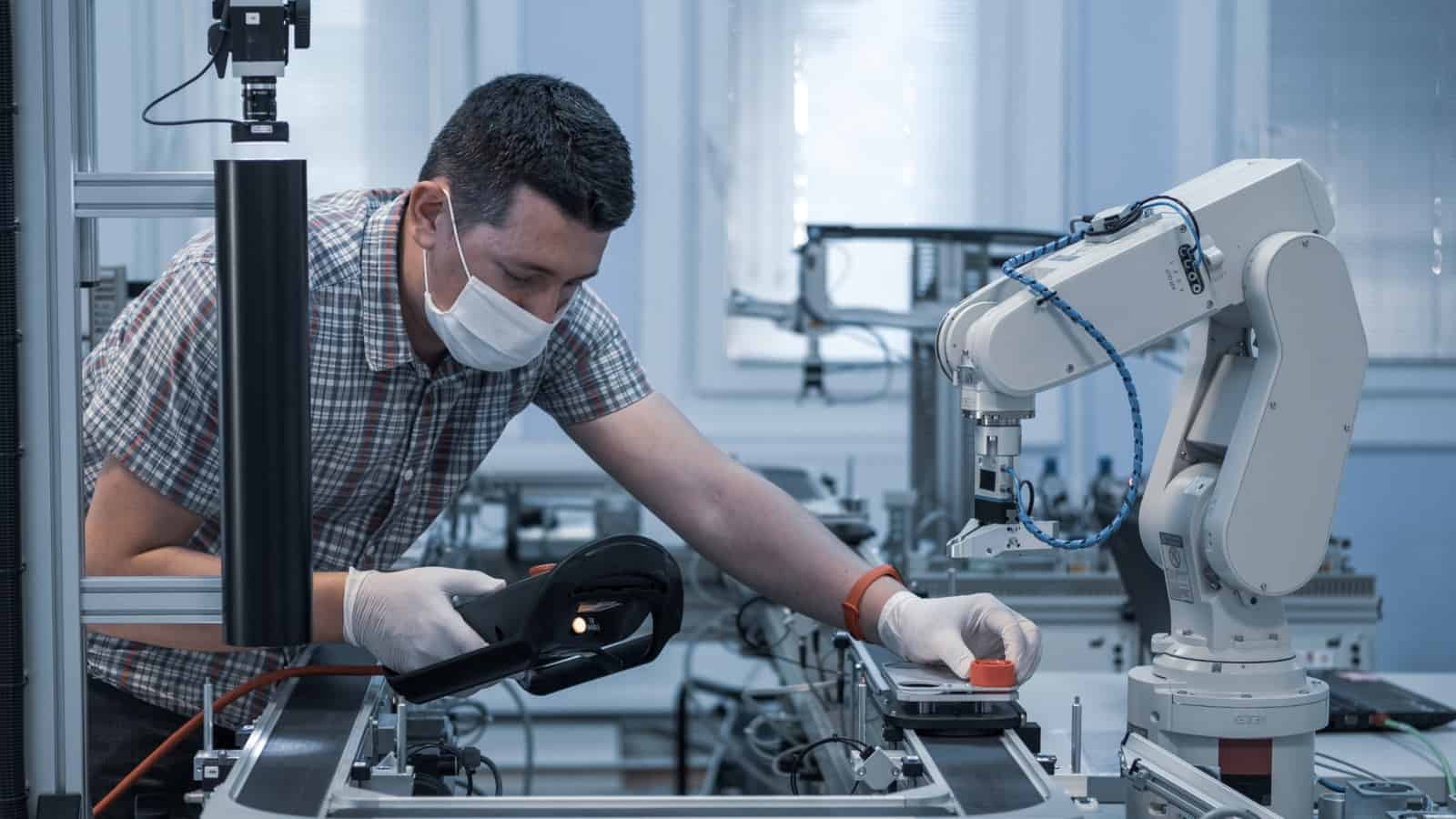
Manufacturers largely agree that technology will help workers, not displace them, speakers said at the Manufacturing Leadership Council’s recent virtual event, “M2030 Visions of the Future: Reflections on New Orleans.”
New Orleans readout: The webinar, which featured a panel of technology experts, was a recap of highlights from the MLC’s December 2021 Manufacturing in 2030 project event in New Orleans, which hundreds of manufacturers attended.
What the future holds: The recent online discussion was primarily about future technological trends in manufacturing, and three major themes emerged: Completely “lights-out” manufacturing (i.e., totally automated) is not a likely near-term reality for manufacturing; upskilling and reskilling will be crucial in attaining syncopation between employees and robots; and most manufacturers have some ways to go to achieve digital maturity.
Lights out? Try lights dimmed: There is a misconception that robotics, artificial intelligence and machine learning will replace human employees on the shop floor. The reality is that they all do best together.
- “I view it more as a ‘dimmer switch’ than ‘lights out,’ and the level to which you can dim depends on the kind of manufacturing you do,” said West Monroe Senior Manager of Consumer and Industrial Practice Alex Jay. Particularly when it comes to “complex materials, [manufacturers will] need a nuanced touch,” which will require more, not less, human interaction.
- “There will be a dimmer switch, a natural limit to how far you would automate,” said Infor Senior Vice President of International Strategy Andrew Kinder. “In the next eight years, we will see more use of technology on the plant floor. Is this a concern for employment? I think the World Economic Forum put that to bed when they said … technology will create 12 million more jobs than it will ever destroy.”
- EY Principal of Strategy and Transactions Rosco Newsom agreed. “[Manufacturers] don’t see ‘lights out’ happening in the near future.”
Upskilling and reskilling: The increased use of Manufacturing 4.0 technologies on the shop floor will only increase the need for skilled talent, the panelists agreed.
- First, “there is reskilling and upskilling required even to make those ‘lights out’” changes, said NTT Data Senior Director of Manufacturing Industry Solutions Baskar Radhakrishnan.
- Complex materials that need nuanced touch and geometric dimensioning and tolerancing “will need more human interaction,” not less, Jay said.
Maturity not yet reached: As was evidenced by questions from the webinar audience and comments from manufacturers during the New Orleans event, many manufacturers could use guidance when it comes to using more technology.
- For smaller manufacturers wondering where to start implementing Manufacturing 4.0, look to “labor-intensive, repetitive tasks,” Radhakrishnan said. “That’s where you start.”
The last word: Robotics aren’t going to put anyone out of a job. As Kinder said, “Tech seems to be a driver rather than a ‘retirer’ of employment.”
Disrupt the Disruption in Manufacturing Supply Chains
Track and trace can improve resiliency and response

The past two years will get plenty of blame for supply chain disruption, but disruption — from human and technology error to weather and other crises — has always been a challenge. Manufacturers are using dashboards to visualize performance measurements and gain deeper diagnostics for uses like preventative maintenance and process optimization. But while they are a critical starting point, supply chain dashboards are not enough. Today’s manufacturers need a way to move from data collection through the supply chain to decision support and actionable insights.
In his supply chain management research, MIT Professor Yossi Sheffi noted that those companies that thrive and survive amid supply chain disruption bring people together in control centers creating a “plan B” for when disruption occurs, and a centralized area of focus for data and insights. Track and trace solutions build on the control tower concept to bring manufacturers the insights needed to improve responsiveness and build supply chain resilience.
The goal is to evolve beyond what typical control towers offer, delivering the ability to autonomously alert or trigger workflows and provide decision support. Tracking and tracing key components and products all through the supply chain provides the core data for eventual autonomous management and control from supplier to the factory and the factory to the customer. In larger factories there is a growing need to apply the same level of tracking and tracing.
Track and Trace in Manufacturing
In a nutshell, a proven track and trace approach will allow you to use the same infrastructure to track multiple sources: materials, products in production, assets, and people. Specifically, the track and trace solution the technology you’re looking for can:
Track and trace the order through the plant by mounting tags and dynamically associating the work order with the tags. This approach supports seamless tracking throughout production, even when the material moves into a different zone or is transferred to a different holding device or tag, or the source of data changes (RFID to GPS to BLE).
Manage events in the zone by monitoring how the movable assets go in and out of areas of production and shipping and sending alerts to managers as needed. For example, an alert is generated if an operator moves a specially calibrated tool from one zone to another, where it might disrupt the production process.
Make assets easy to configure and visualize. Typically, when managers and operators encounter a problem, they don’t want to get bogged down creating or waiting for code. They just want to fix it. A successful track and trace solution will operate via an intuitive administrative interface. For example, it may allow upload of JPG or PNG images of technical factory drawings to provide the image needed to designate zones (production line, workspace, machine) and associate appropriate tracker readers (RFID, BLE and QR).
Use cases for track and trace range from in-production and location or work-in-progress tracking to finished goods and in-transit tracking: The solution will produce alerts if your materials are in the wrong location, inadequate or haven’t reached assembly station. It will report the absence of qualified people at specific station, receipt, and placement of a shipment, and how much of your product is on hand and ready to ship, as well as on the journey from factory to warehouse.
A caveat to the track and trace solution proposition is that your people must be ready for it. As you put the solution together it is important to involve your people in the journey so that they are ready for change.
The value proposition for the control tower with track and trace technologies is the extensiveness of the solution. Going beyond just visualization of the activity in your supply chain, track and trace enables the complex analytics involving materials, people, and assets, that produce actionable insights. It brings autonomous capabilities to tracking, identifying deviations, and predicting where issues may occur — disrupting any disruption in your manufacturing supply chain.
Owen Keates is Industry Executive Asia-Pacific Manufacturing Practice for Hitachi Vantara.
Manufacturers Explore New Tech and Best Practices at MLC Master Class Series Events
Get the Latest News
Sign up here
To help manufacturers navigate Manufacturing 4.0, the NAM’s Manufacturing Leadership Council launched the MLC Master Class Series. This series includes regular virtual events designed to explore new technologies, address pain points and showcase opportunities—all while connecting forward-thinking manufacturing leaders. Sessions in the series include interactive webinars, Technology Deep Dives and Tech Talks.
Webinars: With formats such as panel discussions, use cases and executive interviews, the Master Class webinars are especially beneficial to manufacturers who want to learn about the innovative technologies that have the potential to enhance their operations. These virtual sessions are a chance to hear directly from the digital manufacturing experts moving our industry forward. Content and discussions during these sessions provide insights on identifying, evaluating and implementing new technologies as well as providing strategies for leadership in the age of digital progress.
Deep dives: Deep dives are 60-minute interactive sessions that continue and expand the learning necessary to be successful with new technologies. They provide a more in-depth understanding of specific technologies, where they can be applied and how they can lead to new competitive advantages. Each deep dive also features short breakout sessions focused on either “How Do I Get Started?” or “How Do I Further Leverage?”
Tech talks: Tech talks are 30-minute candid conversations with subject-matter experts who provide insights into how specific technologies are designed to accelerate and drive the journey to Manufacturing 4.0. From purpose and adoption, to challenges with implementation and best practices on operations, MLC’s tech talks will enable you to stay abreast of new and evolving manufacturing technologies within the marketplace.
Master Class events take place throughout the year. Manufacturers at all stages of digital transformation are invited to participate in the entire series or choose individual events based on their needs and interests. To see upcoming classes and access recordings of past sessions, click here.
SURVEY: Future Outlook: Hazy
Manufacturing Leadership Journal content and MLC resources are exclusively available to MLC members. Please sign up for an account or log in to view this content.
Digital Transformation: The Necessity for ‘Unified Leadership Alignment’
Company manufacturing leaders need to get on the same page with digital transformation projects if they are going to succeed
As any company that has undertaken a digital transformation knows from sometimes painful experience, transitioning to the digital model of manufacturing includes overcoming many obstacles. Over the last several years, MLC research has revealed that dealing with legacy systems, keeping abreast of new technologies, and developing return-on-investment models for digital manufacturing expenditures are among the most important challenges manufacturers say they face in their Manufacturing 4.0 journeys.
There are several cultural and organizational issues that manufacturers must sort through as well. After all, digital transformation should not be thought of as just another technology project; it is an undertaking the entirety of the organization must be involved with since it will inevitably change nearly every aspect of how work is conducted, how products are built, and, perhaps most importantly, how power and authority flows in a company.
This aspect of an M4.0 journey – the internal organizational dynamics – was highlighted in a recent MLC Master Class Executive Interview program with NTT DATA, an MLC member company. The program centered on a new survey called “The Road to Industry 4.0” produced by NTT DATA and Oxford Economics. In a question-and-answer session I had with Baskar Radhakrishnan, NTT DATA’s Strategic Advisor for Manufacturing, I asked Mr. Radhakrishnan what he thought were the most important challenges faced by manufacturers as they attempt to get underway with M4.0. He didn’t hesitate: “A lack of unified leadership alignment.”
Why is it so difficult sometimes to get key stakeholders on the same page regarding a strategic move like a digital transformation? In some companies, I think it simply could be that not everyone clearly understands the goals and benefits of such an undertaking. But I also think part of the answer can be found in the words of that question. Digital transformations, by their nature, can indeed be strategic, meaning that they could involve a fundamental or major change in the direction of a company. And the word transform – which means “to change in condition, nature, or character” – clearly signals that what came before may not continue ahead.
As we all know and may have experienced in our own business lives, change can be hard and even frightening when patterns of work or even job roles change. And at the executive level, the often-unmentioned additional elements of power and prestige can come into play. One can role-play typical questions: ‘How will a digital transformation affect my area of expertise and control and my career path?’ ‘I have many years in manufacturing, but do I have enough understanding of digital to continue to contribute or will I become obsolete?’ ‘How can I be sure that the company will continue to be successful after a digital transformation?’
Add into this mix the still relatively early stage the industry is in with regards to codifying the payback and benefits of digital transformation and it is not hard to understand why some executives, including those long in place in their careers and jobs, may still have questions or even hesitancy about a strategy that transforms.
Nevertheless, the unified leadership alignment cited by Mr. Radhakrishnan not only needs to be done but can be done if manufacturing leadership takes the right steps and follows through. My interpretation of this is that leadership needs to work hard to clearly formulate and articulate the vision, goals, and objectives of a digital transformation to everyone in the organization, especially the leadership team which will ultimately be charged with carrying the message and developing the strategy and planning needed to see a transformation through to a successful conclusion. This involves a whole gamut of work, from envisioning a new and better business end state enabled by digital transformation to how a transformation can benefit the individual employee. And leadership needs to be open and transparent about the challenges along the way even as those challenges are being defined as the journey proceeds.
Obviously, this is quite an undertaking for leadership, requiring great reservoirs of stamina and persistence. After all, digital transformation isn’t an option anymore. It’s a business necessity if a company wants to not only survive but thrive in the years ahead. And that may be all the motivation a manufacturer needs to press head.
For an additional resource and further insights, access to the recent NTT DATA and Oxford Research study can be found here:
https://us.nttdata.com/en/engage/the-road-to-industry-4-0.
How Manufacturers Can Navigate Supply Chain Challenges
Get the Latest News
Get involved
As the global supply chain, worker shortage and wage inflation challenges many had hoped were transitory dig in their heels, manufacturers everywhere are wondering how best to get around them.
Panelists at “Successfully Navigating Current Supply Chain Disruptions,” a webinar hosted by the NAM’s Manufacturing Institute, Manufacturing Leadership Council and professional services firm PwC, sought to answer that question.
We rounded up the speakers’ top tips for manufacturers seeking to sustainably and profitably maneuver the several sizable hurdles they still face going into 2022.
- Break down siloes. Now that manufacturers are having to replace traditional supply chain models, changing their company operations to have staff work across siloes is more important than ever, said PwC Partner Debjit Banerjee.
- Expect disruption. If it taught us nothing else, COVID-19 conveyed the importance of being prepared for the unexpected. Going forward, manufacturers would do well to not just plan for the possibility of disruption, but to assume it will come. To that end, preplanned “differentiated customer service” and disruption drills should become the norm, Banerjee said.
- Advance your supply chain planning. Increasingly, Nexteer Automotive, a global maker of steering and driveline components, is focusing on advanced supply chain planning, programs that help predict shipments, supply and demand for smoother operations, said Nexteer Automotive Vice President of Global Manufacturing Operations Dennis Hoeg. With it, “decisions can be made smarter, earlier.”
- Automate. Manufacturers should consider automating repetitive “transaction” work and reserving their employees for analytical tasks that only humans can do, according to Hoeg.
- Balance agility and resilience. Before the pandemic, “we were working on a strategy that was based on agility,” said Rockwell Automation Chief Supply Chain Officer Ernest Nicolas Jr. “Through the pandemic … we had to reprioritize. We had to take a step back to balance agility and resilience.” Manufacturers that want a better agility-resilience balance can do so “through data, process and technology” enablement, according to Nicolas.
- “Relentlessly prioritize.” Nicolas so believes in this advice that he ended his presentation with it. “There’s so much going on right now; we want to be certain we manage our priorities,” he said. “So, there’s a lot we’re saying ‘not now’ to …. but it’s not a matter of ‘no.’ It’s a matter of, ‘We’ve got to get these things finished so we can lay the foundation’” in this new normal.
What Will Manufacturing Look Like in 2030?
Get the Latest News
Sign up here
Given the many uncertainties brought about by COVID-19, supply chain disruptions, labor shortages and more, it might seem as though what happens in the coming decade is anyone’s guess. But on closer examination, there are signposts signaling some of what’s to come—and a closer look at them can help manufacturers plan for the coming years.
At the recent “Manufacturing in 2030: The Shape of Things to Come” event hosted by the NAM’s Manufacturing Leadership Council, in-person and virtual attendees heard from experts, examined trends, explored technologies and discussed upcoming challenges. The goal: to look into the future of manufacturing.
“We can’t be certain about what tomorrow will bring, let alone what might be in 2030,” said MLC Co-Founder David Brousell in his opening remarks. However, “we can project or extrapolate based on current trends and conditions, with a reasonable amount of probability, what the shape of manufacturing will look like in 10 years’ time.”
Why Manufacturing in 2030: Everything in manufacturing is changing, driven by technologies capable of giving decision makers more information than ever before. Prior to the pandemic, companies were already making changes to their organizational structures, shifting from hierarchical models to more collaborative means of organizing people and processes. COVID-19 has only accelerated this change.
Brousell explained: “All around us, conventional notions of what can be accomplished in production … are being reimagined.”
Challenges and opportunities: Upcoming challenges discussed included continued global supply chain disruptions, climate change and the redefinition of the human–machine relationship. Speakers examined the technological, organizational and leadership characteristics that can set manufacturers apart and provide them with a competitive advantage.
What’s next: The MLC will soon launch its yearlong “Manufacturing in 2030” project, which will help manufacturers explore, understand and plan for the future of the manufacturing industry in the next decade.
Said Brousell: “If we do things right in the next 10 years, we have the opportunity to create the greatest engine of manufacturing production humankind has ever seen.”
DIALOGUE: Building Resiliency Amidst Disruption
Manufacturing Leadership Journal content and MLC resources are exclusively available to MLC members. Please sign up for an account or log in to view this content.
